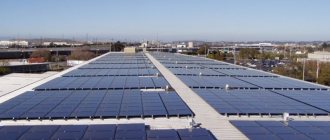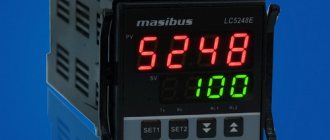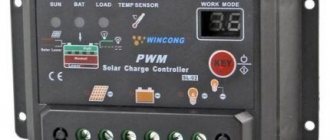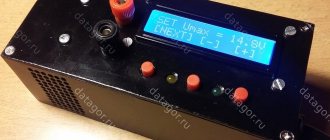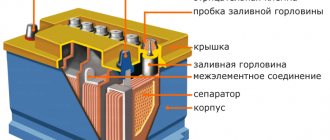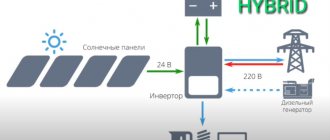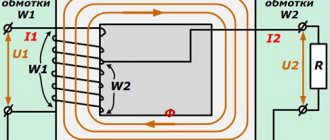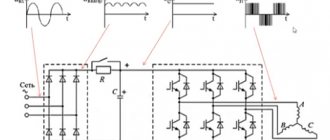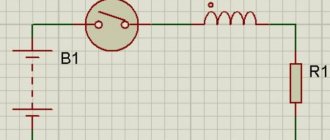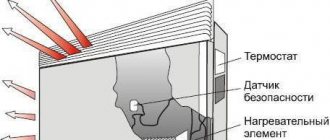Solar panels are considered a very efficient and environmentally friendly source of electricity. In recent decades, this technology has been gaining popularity around the world, motivating many people to switch to cheap renewable energy. The purpose of this device is to convert the energy of light rays into electric current, which can be used to power a variety of household and industrial devices.
Governments of many countries allocate enormous amounts of budgetary funds, sponsoring projects that are aimed at developing solar power plants. Some cities rely entirely on electricity from the sun. In Russia, these devices are often used to provide electricity to country houses and private homes as an excellent alternative to centralized energy supply services. It is worth noting that the principle of operation of solar panels for a home is quite complex. Next, let's take a closer look at how solar panels for the home work in detail.
A little history
The first attempts to use solar energy to generate electricity were made back in the mid-twentieth century. At that time, the leading countries of the world attempted to build efficient thermal power plants. The concept of a thermal power plant involves using concentrated sunlight to heat water into steam, which in turn rotates the turbines of an electrical generator.
Since such power plants used the concept of energy transformation, their efficiency was minimal. Modern devices directly convert the sun's rays into current thanks to the concept of the photoelectric effect.
The modern operating principle of a solar cell was discovered back in 1839 by a physicist named Alexandre Becquerel. In 1873, the first semiconductor was invented, which made it possible to put the principle of operation of a solar cell into practice.
Overview of non-silicon modules
Solar panels made from more expensive analogues reach a coefficient of 30%, they can be several times more expensive than similar silicon-based systems. Some of them still have lower efficiency, while still having the ability to work in an aggressive environment. For the manufacture of such panels, cadmium telluride is most often used. Other elements are also used, but less frequently.
We list the main advantages:
- High efficiency, from 25 to 35%, with the ability to achieve, in relatively ideal conditions, even 40%.
- Photocells are stable even at temperatures up to 150 °C.
- The concentration of light from the luminary on a small panel allows the water heat exchanger to be supplied with energy, resulting in the formation of steam, which rotates the turbine and generates electricity.
As they said earlier, the disadvantage is the high price, but in some cases they are the best solution. For example, in equatorial countries, where the surface of the modules can heat up to 80 °C.
Principle of operation
As stated earlier, the operating principle is based on the semiconductor effect. Silicon is one of the most efficient semiconductors known to mankind at the moment.
When the solar cell (the top silicon wafer of the converter block) is heated, electrons from the silicon atoms are released, after which they are captured by the atoms of the bottom wafer. According to the laws of physics, electrons tend to return to their original position. Accordingly, electrons from the lower plate move along conductors (connecting wires), giving up their energy to charge the batteries and returning to the upper plate.
The efficiency of solar cells created using a single-crystalline silicon deposition method is significantly higher, since in this situation the silicon crystals have fewer edges, which allows electrons to move in a straight line.
Device
The design of a solar battery is very simple.
The design of the device is based on:
- panel body;
- conversion blocks;
- batteries;
- additional devices.
The body performs solely the function of holding the structure together, having no other practical use.
The main elements are converter blocks. This is a photocell consisting of a semiconductor material, which is silicon. We can say that solar batteries, the structure and operating principle of which are always the same, consist of a frame and two thin layers of silicon, which can be applied to the surface using both monocrystalline and polycrystalline methods.
The cost of the battery, as well as its efficiency, depends on the method of applying silicon. If silicon is applied in a monocrystalline manner, then the battery efficiency will be as high as possible, as will the cost.
If we talk about how a solar battery works, then we should not forget about batteries. Typically, two batteries are used. One is the main one, the second is the backup one. The main one accumulates electricity, immediately sending it to the electrical network. The second accumulates excess electricity, and then sends it to the network when the voltage drops.
Additional devices include controllers that are responsible for distributing electricity in the network and between batteries. As a rule, they work on the principle of a simple rheostat.
Diodes are very important solar elements. This element is installed on every fourth part of the converter block, protecting the structure from overheating due to excess voltage. If diodes are not installed, then there is a high probability that after the first rain the system will fail.
Current strength
The strength of the electric current in a solar cell depends on factors such as:
- the amount of light falling on the surface of the element;
- radiation intensity of the light source;
- area of the photon-receiving element;
- angle of incidence of light on the receiving element;
- operating time of the element;
- The efficiency of the system (currently for the most advanced analogues it is no more than 24%. You can read about the efficiency of solar panels in this article.);
- ambient air temperature (the higher it is, the greater the resistance of the element).
How to connect
As mentioned earlier, the design of a solar battery is quite complex. The right solar panel layout will help you achieve maximum efficiency. It is necessary to connect converter units using a parallel-series method, which will allow you to obtain optimal power and the most efficient voltage in the electrical network.
Types of solar panels
There are several types of photocells for solar batteries, which differ in the structure of silicon crystals.
There are three types of photocells:
- polycrystalline;
- monocrystalline;
- amorphous.
The first type of panel is cheaper, but less efficient, because if silicon is deposited in a polycrystalline manner, then electrons cannot move in a straight line.
Monocrystalline solar cells have a maximum efficiency that reaches 25%. The cost of such batteries is higher, but to obtain 1 kilowatt, a significantly smaller area of photocells is needed than when using polycrystalline panels.
Flexible solar cells are made from amorphous silicon, but their efficiency is the lowest and amounts to 4-6%.
Advantages and disadvantages
The main advantages of solar panels:
- solar energy is absolutely free;
- allow you to receive environmentally friendly electricity;
- quickly pay for themselves;
- simple installation and operating principle.
Flaws:
- high cost;
- to satisfy the electricity needs of a small family, a sufficiently large area of photocells is needed;
- efficiency drops significantly in cloudy weather.
Largest producers
The leaders in global solar cell production are Suntech, Yingli, Trina Solar, First Solar and Sharp Solar. The first three represent China, the fourth – the USA, and the fifth, as you might guess, is a division of the Japanese corporation Sharp.
A solar-powered golf cart is a silent and environmentally friendly means of transportation.
The American company First Solar not only produces solar panels, but is also directly involved in the design and construction of solar power plants. The most powerful solar power plant in the world, Agua Caliente, which is located in Arizona, USA, is the work of First Solar engineers.
The largest Ukrainian solar power plant, Perovo, was built and supplied with solar panels by the Austrian company Activ Solar.
The Chinese company Suntech became famous for preparing a football stadium called the “Bird's Nest” in Beijing for the 2008 Summer Olympics. The electricity generated throughout the day using solar panels is stored and then used to light the stadium, water the grass on the football field and operate telecommunications equipment.
The National Stadium in Beijing is densely dotted with solar panels made by Suntech
How to achieve maximum efficiency
When purchasing solar panels for your home, it is very important to choose a design that can provide your home with sufficient power. It is believed that the efficiency of solar panels in cloudy weather is approximately 40 W per 1 square meter per hour. In fact, in cloudy weather the light output at ground level is approximately 200 watts per square meter, but 40% of sunlight is infrared radiation, which solar panels are not sensitive to. It is also worth considering that battery efficiency rarely exceeds 25%.
Sometimes the energy from intense sunlight can reach 500 W per square meter, but when calculating, it is worth taking into account the minimum indicators, which will make the autonomous power supply system uninterrupted.
Every day the sun shines for an average of 9 hours, if we take the annual average. In one day, a square meter of converter surface is capable of generating 1 kilowatt of electricity. If the residents of a house consume approximately 20 kilowatts of electricity per day, then the minimum area of solar panels should be approximately 40 square meters.
However, such an indicator of electricity consumption is rare in practice. As a rule, residents will use up to 10 kW per day.
If we talk about whether solar panels work in winter, then it is worth remembering that at this time of year the duration of daylight hours is greatly reduced, but if you provide the system with powerful batteries, then the energy received per day should be sufficient, taking into account the presence of a backup battery.
When selecting a solar battery, it is very important to pay attention to the battery capacity. If solar panels are needed to operate at night, then the capacity of the backup battery plays a key role. The device must also be resistant to frequent recharging.
Despite the fact that the cost of installing solar panels can exceed 1 million rubles, the costs will pay off within a few years, since solar energy is absolutely free.
Subtleties important for choice
In order for the equipment to be as effective as possible, it is recommended to decide on the following questions:
- Usage format. It determines the financial side. It’s one thing to have a portable panel that you can hang on a window or take on a trip, but quite another to have a full-fledged system for installation on the roof of a house. The cost of the latter depends on the country of origin and power.
- Characteristics. To choose a model of the desired type and power, it is useful to contact specialists, but here everything also depends on the method of use. To charge a flashlight, a panel with a power of 3-4 W is enough; for a country refrigerator, you will need a system of up to 100 W.
- Location. To install solar panels, choose a surface oriented to the south, without shaded areas. The angle of inclination is chosen equal to the latitude of the area and adjusted depending on the time of year: in summer it is increased by 6°, in winter it is reduced by the same amount
Installing solar panels on a roof slope Source guim.co.uk
